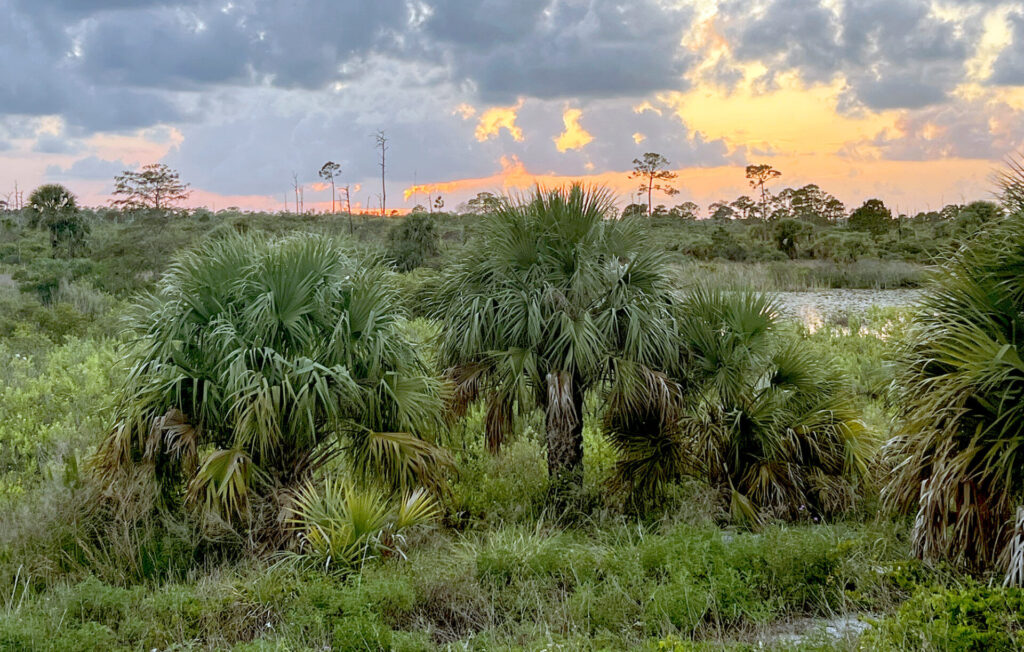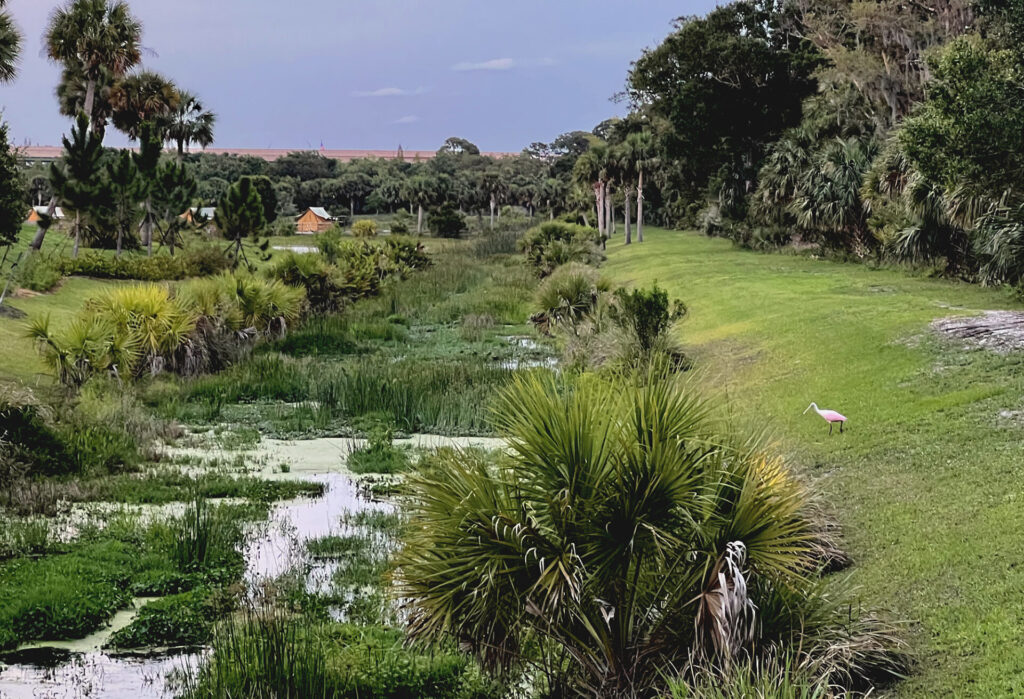Ever wonder why our Florida State Tree, the Sabal Palm, is commonly referred to as the Cabbage Palm?

Does It Produce Cabbage?
Well, kind of, but not really. Where the fronds meet the trunk is called the core, or heart of the palm tree. There, you can find an edible, cabbage-like vegetable that’s creamy white in color, and composed of layers of undeveloped fronds. So, I suppose technically you could say cabbage palms produce one cabbage per tree.
The Heart of Palms
Have you tried this Florida delicacy? It can be eaten raw, cooked, or pickled, and its taste is often described as a mix of sweet and nutty flavors. While not bursting with flavor, I do enjoy the cabbage-meets-artichoke texture and subtle flavor it adds to dishes. In most local grocery stores you can find heart of palms in the canned vegetable aisle.
At local restaurants, you might find a heart of palms salad which usually includes cherry tomatoes, cucumber, and bell peppers drizzled with a tangy citrus dressing. You can also use swamp cabbage in stew, stir-fry, or fry it up to make fritters.
Wait, Did You Say Swamp Cabbage?
Yes, the less flattering name for the heart of palms is indeed swamp cabbage. Because, well, let’s face it, a lot of Florida is swamp land and this is our native tree. I should note that the cabbage palm is protected. You do need a permit in order to cut down a sabal palm, so don’t go harvesting your neighbor’s palm for swamp cabbage soup.
Historical Significance
Historically, the Cabbage Palm was very important to Native American tribes such as the Seminole and the Calusa. They used various parts of the palm tree for food, shelter, and materials for crafts. Early European settlers also relied on the Cabbage Palm for survival, recognizing its value as a versatile resource in an unfamiliar land.
Environmental Significance
This palm species has adapted well to Florida’s diverse ecosystems, showcasing its resilience and ability to flourish in different conditions. The sabal palm also serves as…
Wildlife Habitat: The Cabbage Palm plays a vital role in Florida’s ecosystem by providing shelter and sustenance for various wildlife species. Birds, including woodpeckers and warblers, build nests in its fronds, while raccoons, opossums, and other small mammals use the tree’s trunk cavities as dens.
Coastal Protection: Cabbage Palms growing along the coastline act as a natural buffer, protecting the shore from erosion and storm surges. Their root systems help stabilize the soil, making them extremely valuable in maintaining Florida’s delicate coastal ecosystems.

I hope you enjoyed reading more about the Cabbage Palm. I love this wildly diverse palm tree, an iconic symbol of Florida’s natural heritage. Just a reminder, when trimming cabbage palms and other palm species, consult a professional who knows how to properly care for the tree. Click here to read our article, Are You Murdering Your Palms?
Related Articles:
How To Identify Native Palm Trees on Island
Are You Murdering Your Palms?
The “Hurricane Cut” Is A Myth
